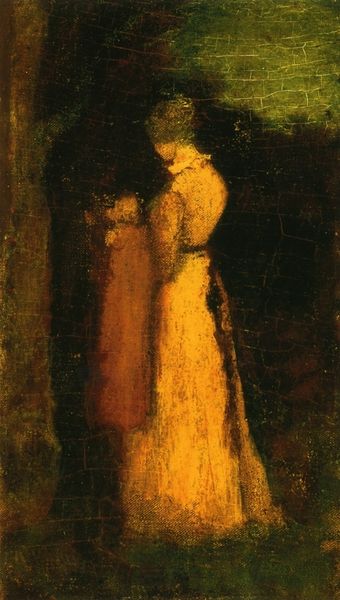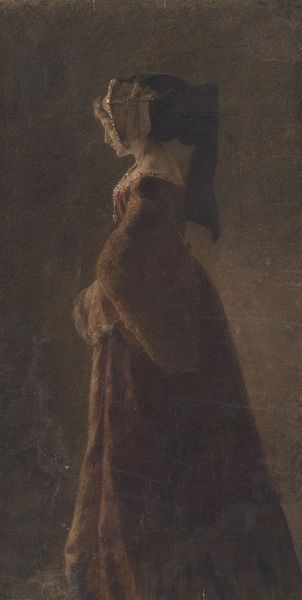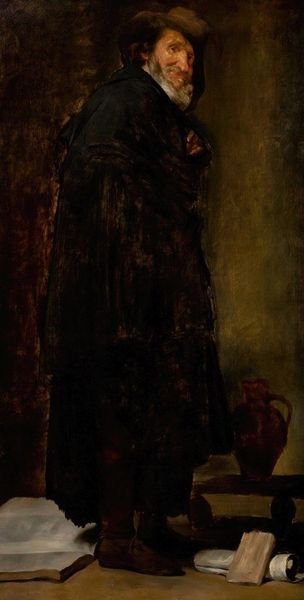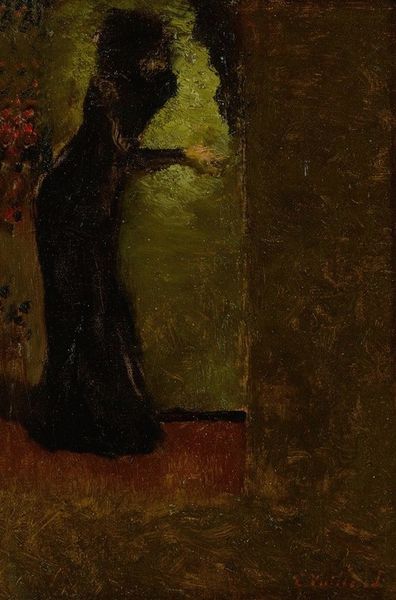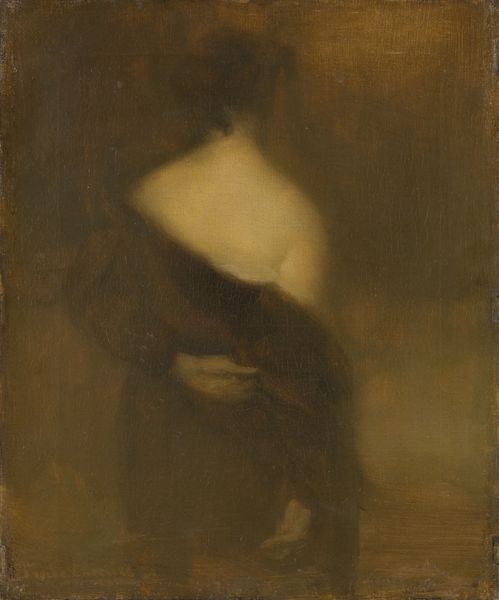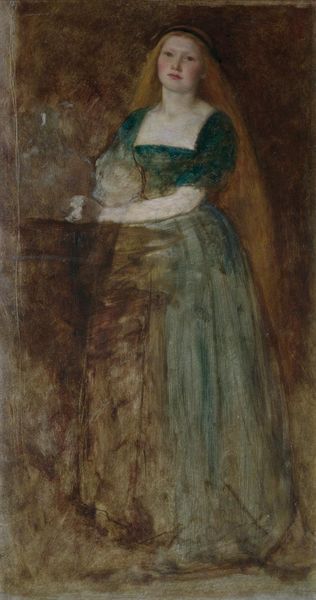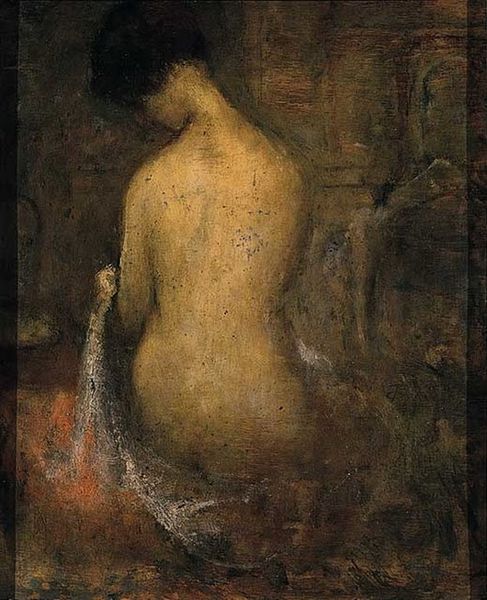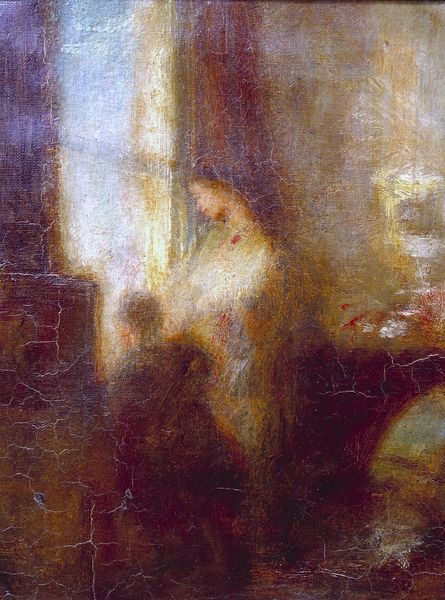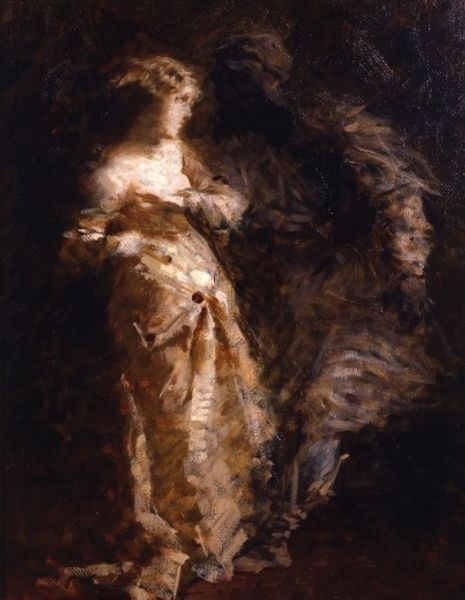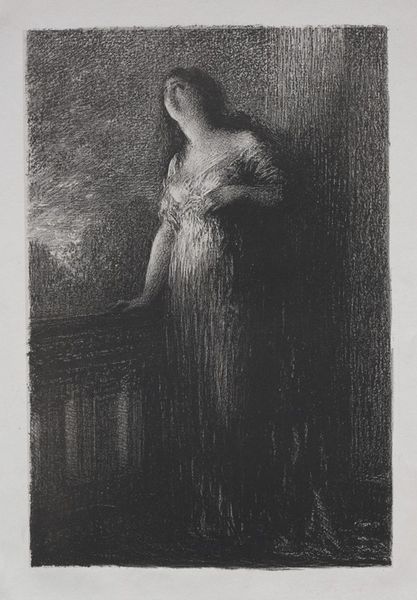
Dimensions: height 27 cm, width 18 cm, depth 8 cm
Copyright: Rijks Museum: Open Domain
Editor: This is "Aan het altaar" by Adolphe Joseph Thomas Monticelli, painted sometime between 1870 and 1886. It's an oil painting with a fairly somber mood. The figures are quite obscured by the darkness and brushstrokes. What can you tell me about it? Curator: It's interesting to view this through the lens of Romanticism, particularly the interest in dramatic lighting and emotional intensity. Given the probable setting and title, can we unpack what going "to the altar" would mean during this time in France? Editor: Well, marriage obviously, but also maybe religious devotion or… confession? Curator: Exactly. Considering the tumultuous political and social climate of France in the late 19th century – think about the Franco-Prussian War and the subsequent rise of the Third Republic – how might this painting be reflecting those anxieties or desires? Editor: Perhaps it speaks to a longing for stability and tradition amid all the upheaval? The darkness feels heavy, like societal pressure. Curator: Precisely. Monticelli often worked outside the established Salon system, which granted him a certain freedom. Do you think this unconventional style further contributes to the painting’s message, challenging academic norms of depicting religious scenes? Editor: Absolutely. The impasto and blurred forms almost suggest a dream-like state, far from reality, almost escaping reality. The brushwork hides as much as it reveals. I hadn't considered its potential as a commentary on the state of society at the time! Curator: That's the power of contextualizing art within its historical moment. The visual language reinforces the underlying anxieties and hopes of the era. Editor: Thanks for opening my eyes to the sociopolitical context here, I learned a lot by thinking about it!
Comments
No comments
Be the first to comment and join the conversation on the ultimate creative platform.
